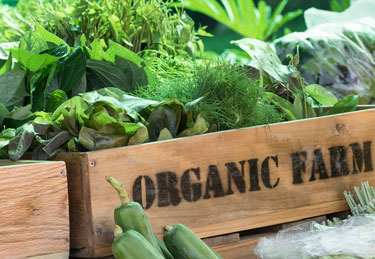Go organic
Eight strategies towards a healthy spray-free garden
| 1 | COMPOST Compost improves the structure of the soil, making water and nutrients more accessible to plant roots. Its effect is long lasting. |
| 2 | WATERING Healthy thriving plants are infinitely more resistant to pests and diseases than sickly malnourished ones. Water deeply. A thorough infrequent soaking encourages roots to grow deeply into the soil where there is a good supply of moisture and nutrients. Frequent shallow watering encourages shallow root growth more likely to suffer in a dry spell. It also increases the risk of disease by creating unnecessarily humid conditions. |
| 3 | FEEDING Slow release organic fertilisers, such as sheep pellets, blood and bone and seaweed are ideal because they release nutrients gradually. Animal manures are also useful but should be well composted before applying them to the garden. |
| 4 | CROP ROTATION This is important for disease prevention and also makes the most of soil nutrients. The idea is to avoid planting the same types of plants in the same soil year after year. The longer a patch of soil has a rest from a plant family, the safer it will be next time around. For example, a patch of soil containing carrots this year could have lettuces next year , peppers and potatoes the year after, and brassicas (cabbages, cauliflower and broccoli) the next. Tomatoes should not be planted in the soil they occupied the previous year. If it’s too hard to shift the tomatoes, try changing the soil. |
| 5 | MULCHING Mulch is a blanket of organic matter covering the soil surface. Mulching helps keep the soil moist and protects plant roots from winter cold and summer heat. As organic mulch breaks down it improves the soil for future growth. It also slows weed growth. |
| 6 | BASIC HYGIENE Curb disease before it happens by keeping plants well aerated. Avoid overcrowding. Groom plants to remove decaying flowers, fruit or foliage. Never add diseased or infected plants or trimmings to your compost heap. |
| 7 | TOUGH LOVE Avoid those plants that attract disease or fail to thrive in your climate. |
| 8 | THINK VARIETY A garden with a wide variety of plants is less likely to attract large populations of any one pest. Strongly scented herbs and certain flowers act as repellents or throw pests off their target. Companion planting is a practice that’s been handed down through generations of gardeners. |
Good companions:
- Catmint attracts parasitic wasps and repels ants, mice and rats.
- Marigolds attract hoverflies, which feed on aphids.
- Calendulas help keep whitefly away from tomatoes.
- Garlic confuses carrot rust fly and white butterfly and accumulates sulphur, a natural fungicide.
- Hyssop planted around the house deters ants from coming inside.
- Spearmint repels aphids, beetles and woolly aphids.
- Nasturtium planted around base of fruit trees helps repel borer.
- Fennel repels aphids and attracts predatory insects.
- Basil improves the growth and flavour of tomatoes.
- Predatory insects are attracted by: chamomile, chervil, dandelion, cherry pie, marigold, mint, sunflowers and yarrow.
- Anise camouflages the odour of brassicas and attracts predatory wasps which prey on aphids.
- Borage attracts bees.

Look for these products, tips and advice at a Go Gardening Store near you.
5-Jan-2023


